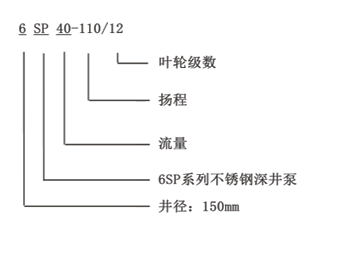Dec . 01, 2024 08:22 Back to list
Wiring Guide for Submersible Well Pumps for Efficient Installation
How to Wire a Submersible Well Pump A Comprehensive Guide
Wiring a submersible well pump can seem like a daunting task, but with the right knowledge and tools, it can be manageable for those with some electrical skills. Submersible pumps are designed to be submerged underwater, making them ideal for drawing water from wells. This guide will walk you through the necessary steps to wire your submersible well pump safely and effectively.
Tools and Materials Needed
Before you begin, gather the following tools and materials
1. Wire Strippers Essential for removing insulation from the electrical wires. 2. Electrical Tape Helps secure connections and prevent moisture ingress. 3. Connectors Ensure proper connections for attaching wires. 4. Voltage Tester To verify power supply and ensure safety. 5. PVC Pipe or Conduit For protecting the wires above ground or through well casings. 6. Submersible Pump Your well pump unit.
Safety First
Before handling any electrical equipment, make sure to turn off the power supply to the well pump at the circuit breaker to avoid any risk of electric shock. Always use insulated tools and wear rubber gloves when working with electrical components.
Step 1 Understanding the Wiring
Most submersible pumps come with a power cable that is designed to be submerged in water. Typically, these pumps require a three-wire system one for the power supply, one for the start capacitor, and one for the ground. If you are using a control box, you may also have additional wires to consider.
Step 2 Preparing the Wiring
Check your pump’s manual for the correct wire color-coding and connections
. Once you’re familiar with the wiring schematic, you can begin stripping the insulation from the ends of the wires using wire strippers, exposing about half an inch of bare wire.Step 3 Connecting the Wires
how to wire submersible well pump

Make sure the power supply is still off. Begin by connecting the wires from the well pump to the supply wires that lead to the power source.
1. Black Wire This is usually the power wire that connects to your power supply. 2. Red Wire Typically designated for the start capacitor. 3. Green or Bare Copper Wire This serves as the ground wire and should be connected to either the grounding system of your home or a ground rod.
Twist the corresponding wires together and use a connector to secure them. Make sure that there are no exposed wires that could create a short circuit.
Step 4 Waterproofing the Connections
After making the connections, wrap each connection securely with electrical tape to prevent water from seeping in. If your pump is in an area prone to moisture, consider using a waterproof junction box to further protect the wiring.
Step 5 Installing Above Ground Components
Once you have securely connected the wires, route them to the control box or circuit breaker above ground. Use PVC pipes or conduit to protect the wires as they transition from underwater to above ground. Secure the conduit properly and ensure that there are no sharp edges that might damage the wires.
Step 6 Testing the System
After everything is connected and secured, restore power at the circuit breaker. Use a voltage tester to check that the power is properly flowing to the pump. Turn on the pump and listen for the sound of the motor. If it starts correctly, monitor it for a few minutes to ensure it operates smoothly and without unusual noise.
Conclusion
Wiring a submersible well pump can be straightforward if you follow the correct procedures and take necessary safety precautions. Whether you are replacing an old pump or installing a new one, understanding the wiring process is crucial to ensure efficient and safe operation. If at any point you feel uncertain about the wiring process, do not hesitate to consult with a licensed electrician. Proper installation will not only guarantee a reliable water supply but will also prolong the life of your pump.
-
Submersible Water Pump: The Efficient 'Power Pioneer' of the Underwater World
NewsJul.01,2025
-
Submersible Pond Pump: The Hidden Guardian of Water Landscape Ecology
NewsJul.01,2025
-
Stainless Well Pump: A Reliable and Durable Pumping Main Force
NewsJul.01,2025
-
Stainless Steel Submersible Pump: An Efficient and Versatile Tool for Underwater Operations
NewsJul.01,2025
-
Deep Well Submersible Pump: An Efficient 'Sucker' of Groundwater Sources
NewsJul.01,2025
-
Deep Water Well Pump: An Efficient 'Sucker' of Groundwater Sources
NewsJul.01,2025
-
 Submersible Water Pump: The Efficient 'Power Pioneer' of the Underwater WorldIn the field of hydraulic equipment, the Submersible Water Pump has become the core equipment for underwater operations and water resource transportation due to its unique design and excellent performance.Detail
Submersible Water Pump: The Efficient 'Power Pioneer' of the Underwater WorldIn the field of hydraulic equipment, the Submersible Water Pump has become the core equipment for underwater operations and water resource transportation due to its unique design and excellent performance.Detail -
 Submersible Pond Pump: The Hidden Guardian of Water Landscape EcologyIn courtyard landscapes, ecological ponds, and even small-scale water conservancy projects, there is a silent yet indispensable equipment - the Submersible Pond Pump.Detail
Submersible Pond Pump: The Hidden Guardian of Water Landscape EcologyIn courtyard landscapes, ecological ponds, and even small-scale water conservancy projects, there is a silent yet indispensable equipment - the Submersible Pond Pump.Detail -
 Stainless Well Pump: A Reliable and Durable Pumping Main ForceIn the field of water resource transportation, Stainless Well Pump has become the core equipment for various pumping scenarios with its excellent performance and reliable quality.Detail
Stainless Well Pump: A Reliable and Durable Pumping Main ForceIn the field of water resource transportation, Stainless Well Pump has become the core equipment for various pumping scenarios with its excellent performance and reliable quality.Detail
